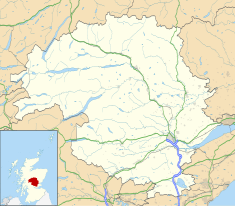| Newton Castle | |
|---|---|
 The castle, from the southwest, pictured in 2008 | |
| Coordinates | 56°35′31″N3°21′01″W / 56.592024°N 3.350413°W |
| Built | c. 1550 |
Listed Building – Category A | |
| Designated | 5 October 1971 |
| Reference no. | LB22314 |
Newton Castle, a Category A listed building dating to the mid-16th century, stands near the town of Blairgowrie in Perth and Kinross, Scotland. [1] [2] It had minor alterations in the 18th century, and in 1883 a wing was added to the northwest, possibly by Lake Falconer. A subterranean vault, possibly discovered in 1911, is listed separately. [1]
